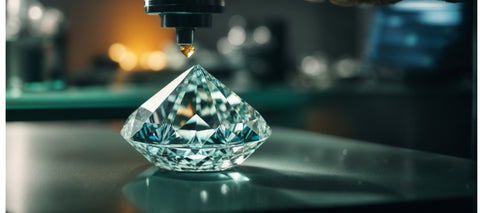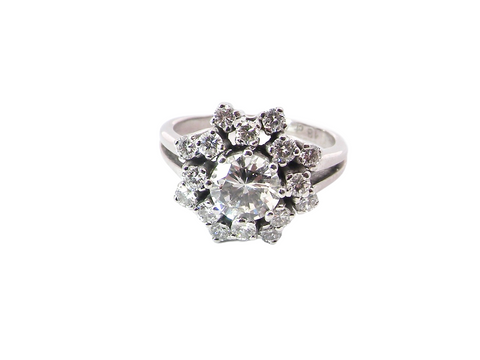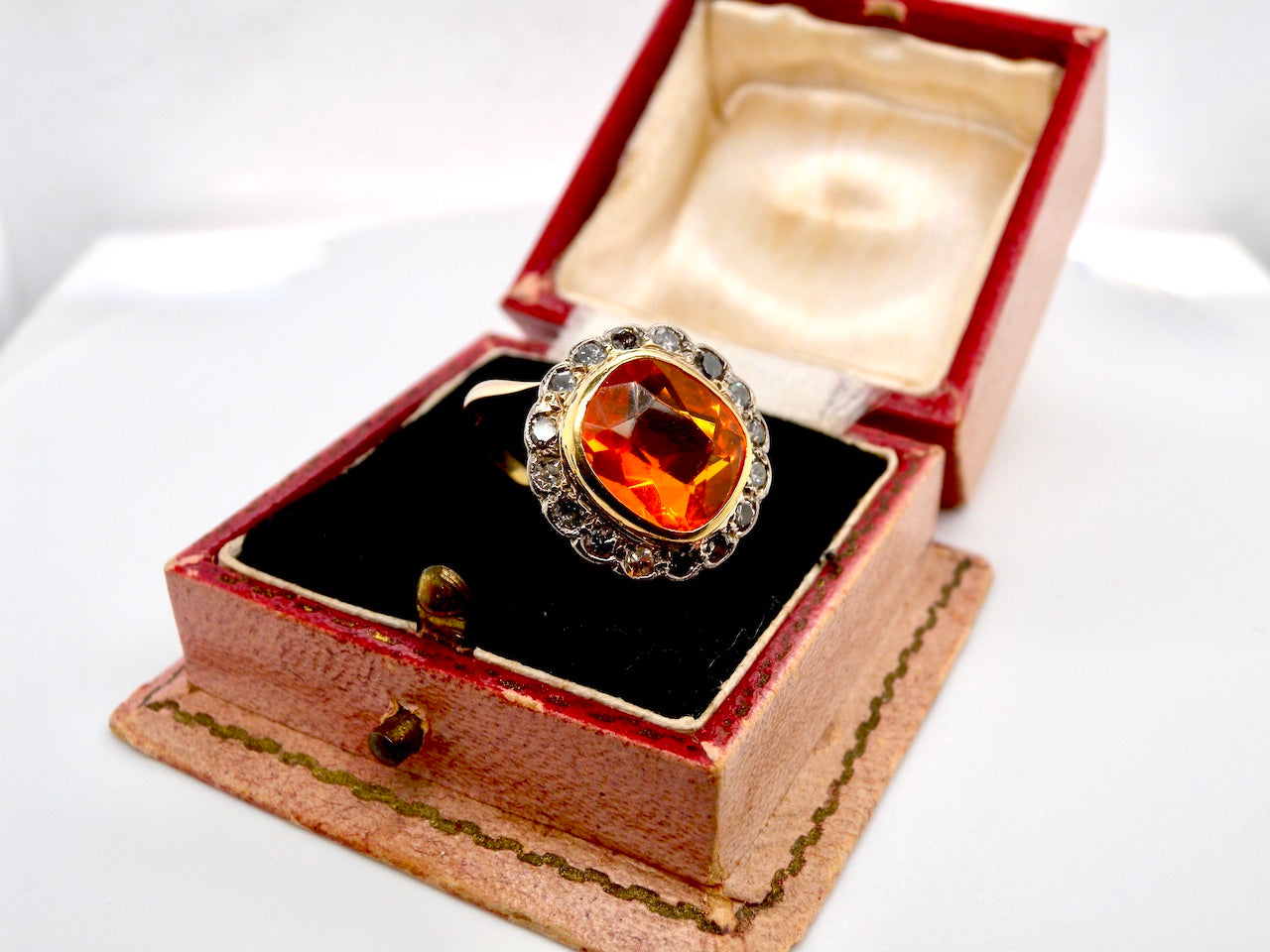Are Lab-Grown Diamonds A Good Investment Over Vintage Jewellery?
Lab-grown diamonds and vintage and antique jewellery are both popular choices in the jewellery industry. They offer unique and desirable characteristics that attract consumers. Lab-grown diamonds have been gaining popularity due to their ethical and sustainable attributes. Consumers are becoming more conscious of the environmental and social impacts of their purchasing decisions
What are Lab-Grown Diamonds?

- 1 Lab-grown diamonds are created in a laboratory setting using advanced technology. They are grown under controlled conditions that mimic the natural diamond formation process.
- 2 Compared to natural diamonds, lab-grown diamonds have a similar composition and origin. They possess the same physical and chemical properties as their natural counterparts.
- 3 The advantages of lab-grown diamonds include their lower environmental impact and conflict-free nature. By eliminating the need for diamond mining, lab-grown diamonds contribute to reducing deforestation, habitat destruction, and water pollution. They also ensure that consumers can enjoy diamonds without supporting unethical practices.
Sustainability of Lab-Grown Diamonds
As mentioned, lab-grown diamonds have a lower environmental impact compared to natural diamonds. The process of mining natural diamonds can lead to deforestation, habitat destruction, and water pollution. On the other hand, lab-grown diamonds are created without any of these adverse effects.
Ethically, lab-grown diamonds are free from the concerns of human rights abuses and conflicts associated with the diamond mining industry. By choosing lab-grown diamonds, consumers can be confident that their purchase aligns with their values of supporting ethical practices and social responsibility.
Will Lab Grown Diamonds Lose Value?
The long-term resale value of lab-grown diamonds can be uncertain and may not appreciate in the same way as natural diamonds. Several factors contribute to this:
- Market Acceptance: Lab-grown diamonds are relatively new to the market, and their long-term resale value depends on how well they are accepted by consumers over time. Natural diamonds have a long history of value retention and appreciation.
- Technological Advances: As technology evolves, it may become easier and more cost-effective to produce lab-grown diamonds, potentially impacting their market value. Natural diamonds, on the other hand, remain finite resources.
- Consumer Preferences: The market for lab-grown diamonds may fluctuate depending on consumer preferences. It's uncertain whether lab-grown diamonds will hold their value like natural diamonds, which have a well-established reputation for being a stone of value.
- Certification and Grading: The resale value of lab-grown diamonds may be influenced by the certification and grading standards used. Transparent and reputable certification can instill confidence in buyers and sellers.
- Secondary Market: The availability of a well-developed secondary market for lab-grown diamonds can also impact their long-term value. If there is a robust market for reselling lab-grown diamonds, it may provide more stable long-term value.
In summary, the long-term resale value of lab-grown diamonds is still evolving, and it may not match the established history and value retention of natural diamonds. Factors such as market acceptance, technological developments, consumer preferences, certification standards, and the existence of a secondary market all play a role in determining the resale value of lab-grown diamonds
Lab Grown Diamonds Over Traditional Diamond Mining
If lab-grown diamonds were to significantly take over the market and reduce the demand for traditionally mined diamonds, there would likely be several significant impacts on current diamond mine production:
- Decreased Demand: The most immediate and direct impact would be a reduced demand for traditionally mined diamonds. As lab-grown diamonds offer an alternative that is often considered more ethical and environmentally friendly, consumers who prioritize these factors may choose lab-grown diamonds over natural ones.
- Economic Consequences: A decline in demand for natural diamonds could have severe economic consequences for regions and communities that rely heavily on diamond mining for their livelihoods. Many diamond-producing countries, particularly in Africa, depend on diamond exports as a significant source of revenue. Reduced demand could lead to job losses and economic challenges in these areas.
- Price Pressure: A decrease in demand for natural diamonds could lead to price pressure on the diamond market. Diamond prices are influenced by supply and demand dynamics, and a surplus of natural diamonds in the market could lead to lower prices. This could further impact the economic viability of traditional diamond mines.
- Mine Closures: If the price of natural diamonds falls significantly due to reduced demand, some diamond mines may become economically unviable and could be forced to close. This could result in abandoned mines that require environmental remediation, potentially adding to environmental challenges.
- Shift in Focus: Some diamond mining companies may choose to shift their focus towards other minerals or resources to compensate for the decline in diamond demand. This could lead to changes in the mining industry landscape and regional economies.
- Technological Advancements: To remain competitive, traditional diamond mining companies may invest in technological advancements to improve efficiency and reduce their environmental impact. This could lead to innovations in mining practices and environmental management.
-
Market Coexistence: It's important to note that lab-grown diamonds and natural diamonds may continue to coexist in the market, with each serving different consumer preferences. Some consumers may still prefer natural diamonds for their unique geological origin and characteristics, while others may favor lab-grown diamonds for their ethical and environmental advantages.
It's worth emphasizing that the extent of these impacts would depend on the rate at which lab-grown diamonds gain market share, consumer preferences, and the strategies employed by both the natural diamond and lab-grown diamond industries to adapt to changing market dynamics. Additionally, the diamond mining industry has been adapting to market changes for many years, so it may continue to evolve in response to shifting consumer preferences.
Vintage and Antique Jewellery: The Epitome of Sustainability
When considering sustainability in the context of diamonds, vintage and antique jewellery emerges as the epitome of environmentally and socially responsible choice, surpassing both lab-grown diamonds and traditional diamond mining. Here are the compelling reasons why vintage and antique jewellery represent the most sustainable option:
1. Preservation of Resources
Vintage and antique jewellery require no new resource extraction. They are crafted from materials that were sourced and processed many years ago. This fundamental characteristic inherently reduces the environmental impact associated with resource-intensive diamond mining and the energy-consuming production of lab-grown diamonds. By wearing vintage and antique pieces, consumers actively participate in resource conservation and contribute to a more sustainable future.
2. Circular Economy Principles
Vintage and antique jewellery align perfectly with the principles of the circular economy. By giving new life to existing pieces, consumers contribute to reducing waste and minimizing the need for new raw materials. In contrast, the production of lab-grown diamonds requires significant energy input and can generate waste, and traditional diamond mining leads to habitat destruction and pollution.
3. Local Artisanal Craftsmanship
Purchasing vintage and antique jewellery supports local artisans and small businesses specializing in restoring and selling these unique pieces. This patronage can have positive economic and social impacts on local communities, preserving traditional craftsmanship and skills. In contrast, lab-grown diamonds are typically produced in high-tech laboratories, and traditional mining operations often involve large corporations with global reach.
4. Ethical and Social Responsibility
One of the most compelling aspects of vintage and antique jewellery is its avoidance of supporting current mining practices and the associated ethical and environmental issues. Traditional diamond mining has been linked to concerns such as human rights abuses and environmental degradation. Choosing vintage and antique pieces allows consumers to enjoy the beauty of diamonds without contributing to these negative impacts.
5. Minimal Carbon Footprint
The carbon footprint associated with vintage and antique jewellery is often lower compared to lab-grown diamonds, which require energy-intensive manufacturing processes. Antique and vintage pieces have already been produced, and their carbon footprint primarily stems from transportation and retailing. This represents a more eco-friendly choice for consumers.
6. Unique Historical Value
Perhaps the most significant appeal of vintage and antique jewellery is its historical and unique value. Each piece carries with it a story, a sense of history, and a connection to a bygone era. This celebration of uniqueness and history fosters a sustainable and conscious approach to fashion by encouraging consumers to appreciate and preserve the heritage embodied in these pieces

Conclusion: The Undisputed Sustainable Choice is?
In the pursuit of sustainable and responsible choices in the world of diamonds and jewellery, vintage and antique jewellery emerges as the unequivocal front runner. This conclusion stems from a careful examination of the key factors that encompass sustainability, setting vintage and antique pieces apart from both lab-grown diamonds and traditional diamond mining.
Resource Preservation: Vintage and antique jewellery's core principle is the preservation of resources. By re-imagining and reusing materials from a bygone era, it actively reduces the demand for new resource extraction, thereby minimizing the environmental toll.
Circular Economy: Vintage and antique jewellery embody the ideals of a circular economy. They breathe new life into existing pieces, contributing to the reduction of waste and lessening the need for fresh raw materials. This contrasts starkly with the resource-intensive production of lab-grown diamonds.
Local Artisanal Craftsmanship: Choosing vintage and antique jewellery supports local artisans and small businesses, fostering sustainable economic and social ecosystems. This engagement is an antidote to the often impersonal and distant operations associated with lab-grown diamond production.
Ethical Responsibility: Vintage and antique jewellery ethically distance themselves from current mining practices, sidestepping the dilemmas of human rights abuses and environmental degradation that often shadow traditional diamond mining.
Carbon Footprint: With its minimal carbon footprint, vintage and antique jewellery emerge as environmentally friendly choices compared to the energy-intensive processes of lab-grown diamond manufacturing.
In a world where sustainability and ethics play pivotal roles in consumer choices, vintage and antique jewellery stand as timeless champions. Their allure transcends trends, embracing a blend of elegance, sustainability, and social responsibility. When considered alongside the environmental and ethical considerations surrounding lab-grown diamonds and traditional diamond mining, vintage and antique jewellery emerge as not just an option, but as the unequivocal best choice for those seeking to make a profound and lasting impact on our planet and society. By wearing a piece of history, one becomes a steward of the future.



